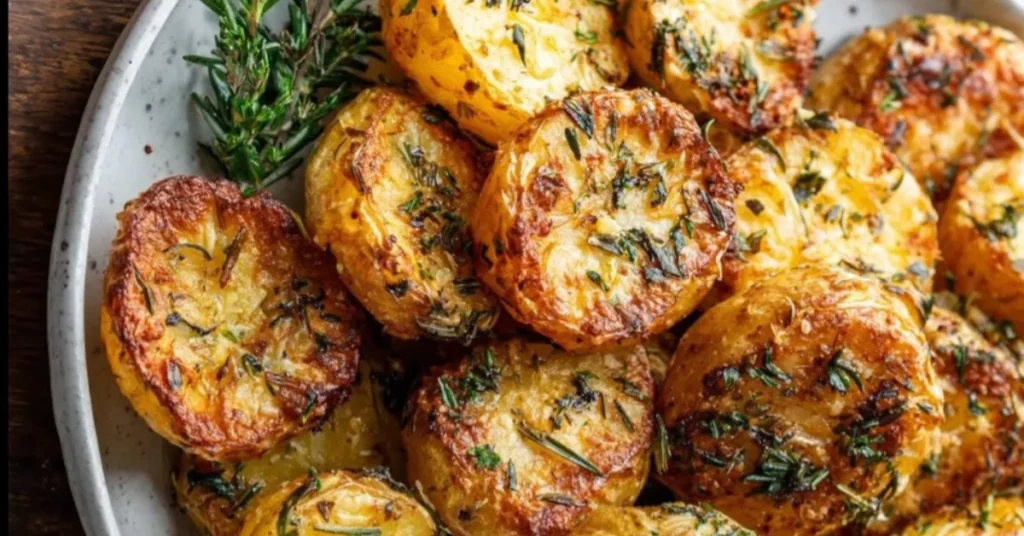
There is a simple truth in the culinary world: everyone loves **roasted potatoes**. But the difference between a good roasted potato and a *perfect* roasted potato is monumental. A good one is warm and soft; a perfect one has a shatteringly crisp, golden shell and an impossibly light, fluffy interior. It’s the kind of side dish that steals the show.
This ultimate **roasted potatoes recipe** is the culmination of years of testing and leveraging science to achieve that perfect contrast of textures. Forget soggy, pale potatoes—we’re using specific techniques, from the preparation to the temperature, to ensure a flawless result every single time. Once you master this method, you’ll never go back to simply tossing potatoes in the oven again.
Whether you are serving them alongside a holiday roast or as a simple weeknight addition, these **oven roasted potatoes** are guaranteed to be the star of your plate. Let’s get to the secrets of achieving potato perfection!
Why You’ll Love This Recipe
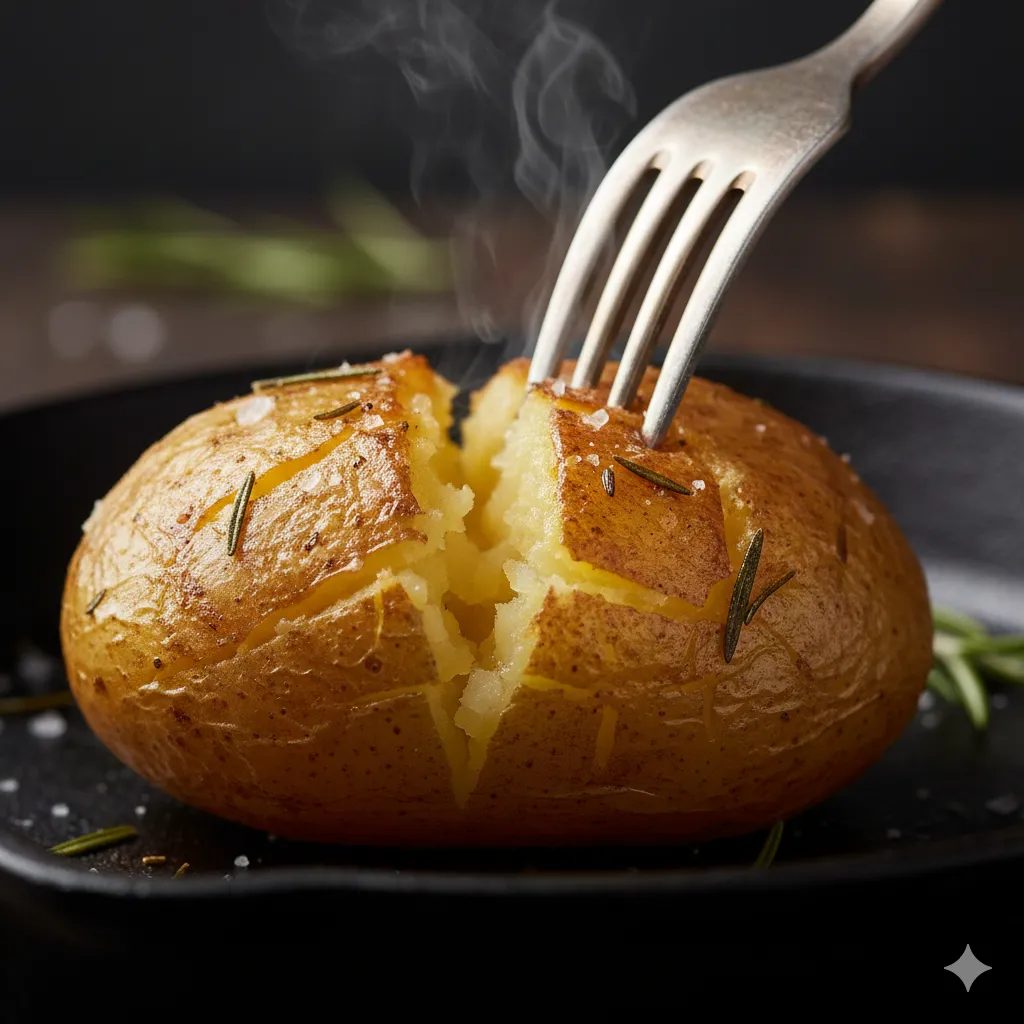
- **The Perfect Crisp:** We utilize a two-step preparation—boiling and roughing up the edges—that creates a starchy slurry, which is the secret to an incomparable crunch.
- **Fluffy Center:** By controlling the initial cooking, the interior cooks perfectly before the exterior begins to crisp, guaranteeing a light, airy center.
- **Simple, Customizable Flavor:** The base recipe relies on classic aromatics like rosemary and garlic, but the method is versatile enough for any seasoning blend you prefer.
- **Easy to Scale:** Whether you’re cooking for one or twenty, the technique remains the same, making this an ideal side for any gathering.
Ingredients
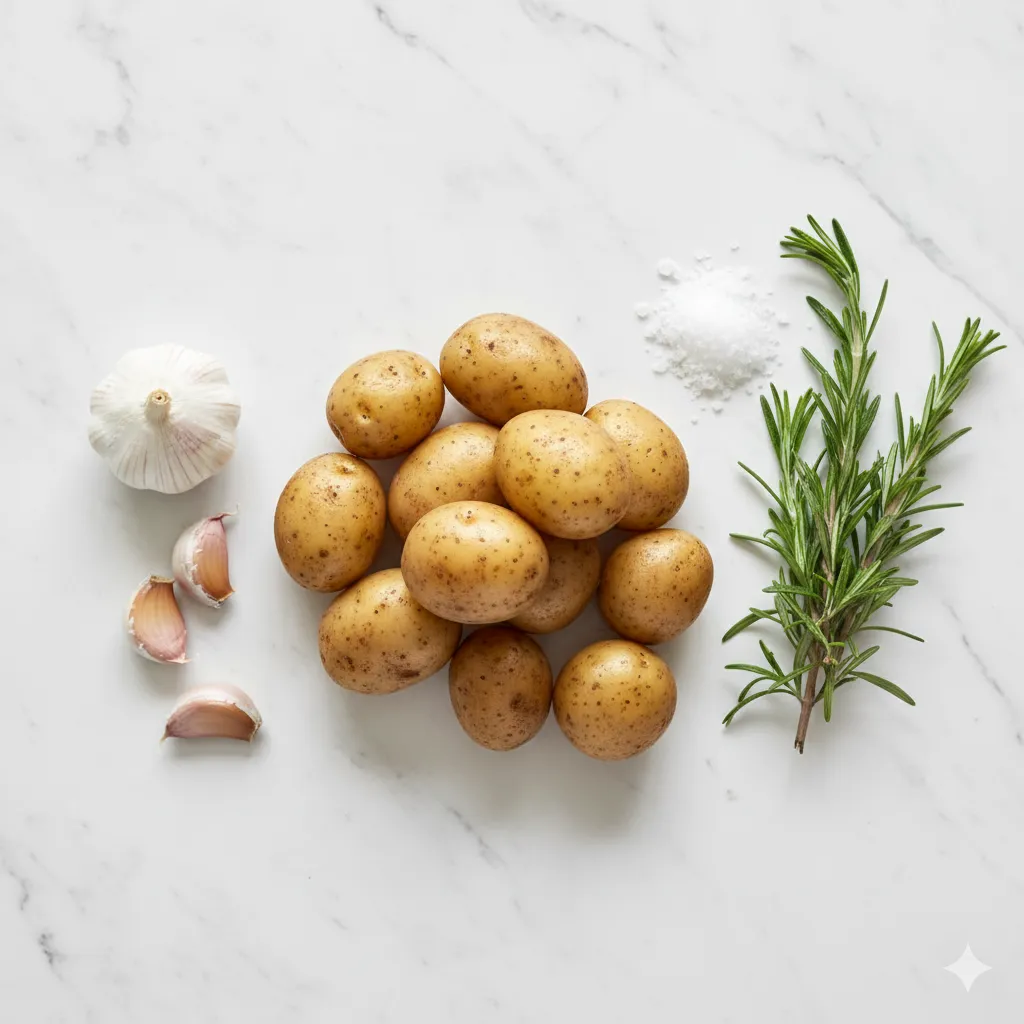
Achieving flavor brilliance starts with simple, high-quality ingredients.
For the Potatoes:
- **Potatoes:** Russet or Yukon Gold varieties are recommended. Russets offer maximum starchiness for the fluffiest interior and crispiest exterior, while Yukon Golds provide a creamy texture and beautiful golden color.
- **Salt:** Coarse salt (like kosher or sea salt) for the boiling water.
For Roasting:
- **High-Heat Oil:** Olive oil is traditional, but for maximum crispiness and a higher smoke point, we recommend using light olive oil, avocado oil, or rendered duck/goose fat for an intensely rich flavor.
- **Flaky Sea Salt:** Essential for finishing and adding a burst of salinity and textural contrast.
- **Fresh Rosemary:** Provides a fragrant, woody note that is classic with potatoes.
- https://flavorillarecipes.com/frozen-garlic-bread/**Garlic:** Whole cloves, smashed but unpeeled, roast alongside the potatoes, infusing the oil with a subtle, sweet aroma without burning.
- **Black Pepper:** Freshly cracked is always best.
Instructions
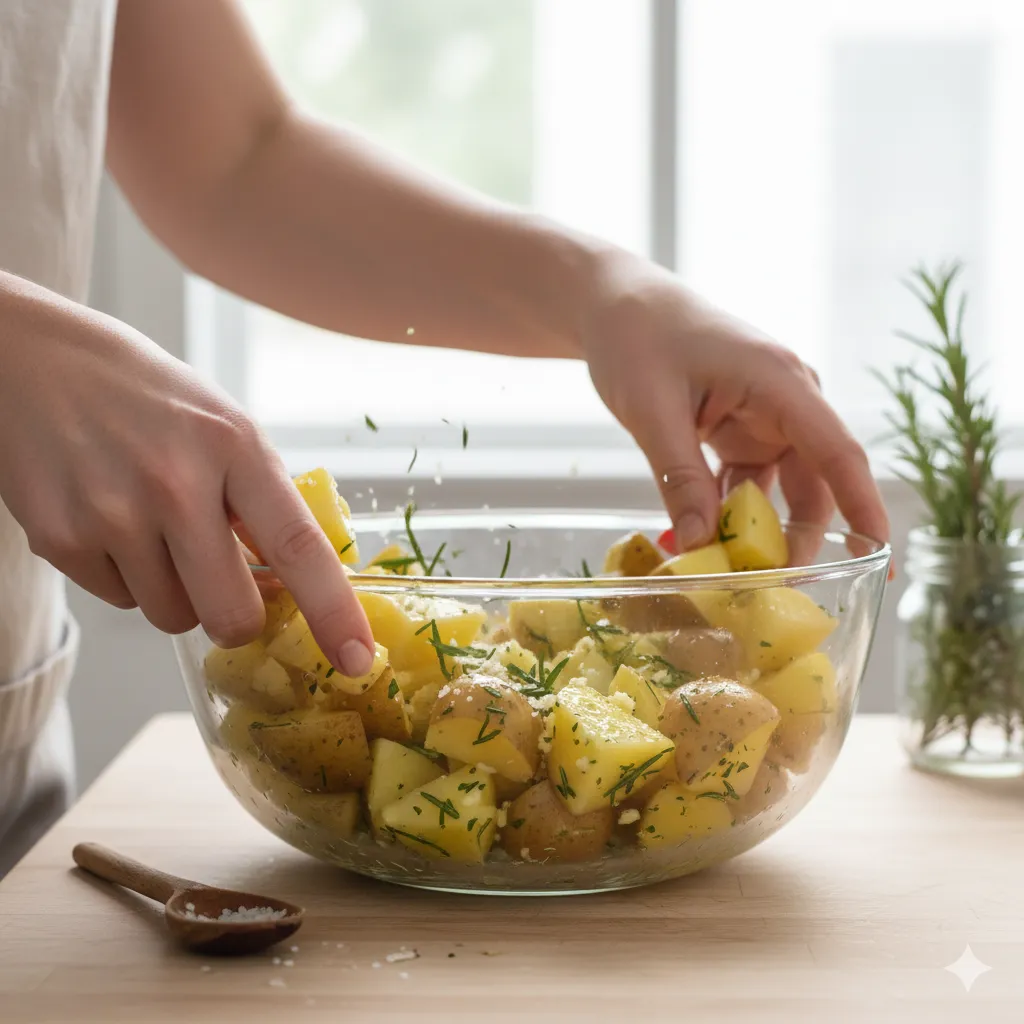
1. Prep the Potatoes:
Peel the potatoes if desired (optional) and cut them into uniform 1.5-inch pieces. Uniformity is key for even cooking. Rinse them under cold water to remove surface starch.
2. The Secret Boil:
Place the cut potatoes in a large pot and cover with cold water. Add a generous amount of salt. Bring to a boil, then immediately reduce the heat and simmer for exactly 8-10 minutes. The potatoes should be slightly tender around the edges but still firm in the center.
3. The Rough-Up Step (Crucial for Crisp):
Drain the potatoes thoroughly. Return the hot, drained potatoes to the empty pot. Cover the pot with a lid and shake the pot vigorously for about 30 seconds. The edges of the potatoes will look bruised and mashed—this creates a starchy, rough coating that will turn into a hyper-crispy crust during roasting.
4. Season and Toss:
Preheat your oven to 400°F (200°C). In a large bowl, toss the roughed-up potatoes with your high-heat oil (or fat), the smashed garlic cloves, and rosemary. Ensure every potato piece is coated. Spread the potatoes in a single, even layer on a large, heavy-duty sheet pan. **Crucially: Do not overcrowd the pan.** Use two pans if necessary to maintain space between the potatoes; this allows moisture to escape and promotes crisping.
5. Roast to Perfection:
Place the pan in the preheated oven. Roast for 30 minutes. Flip the potatoes and return to the oven for another 15-25 minutes, or until the potatoes are deeply golden-brown and satisfyingly crispy. The total cooking time for achieving the best **oven roasted potatoes** will be between 45 and 55 minutes.
6. Finish and Serve:
Remove the potatoes from the oven. Immediately sprinkle with a final generous pinch of flaky sea salt and fresh black pepper. Toss gently to coat and serve immediately for peak crispness.
You Must Know
The science behind achieving truly crispy **roasted potatoes** is called gelatinization, and it is perfected by the two-step process of par-boiling and roughing up the edges. When potatoes are boiled, the starch granules within them absorb water and swell.
The initial boiling begins the process, and when you shake the boiled potatoes (the “rough-up” step), the partially swollen starch granules rupture on the surface, creating a starchy “slurry” or paste. During the final high-heat roasting at 400°F (200°C), this starch slurry dries out and forms thousands of tiny glass-like structures on the surface, which become your shatteringly crisp crust.
This process is similar to what happens when making the highly rated Serious Eats roast potatoes recipe, which champions this technique. The high heat of the oven not only completes this textural transformation but also encourages the Maillard reaction, developing the deep, savory, golden-brown color and rich, complex flavor that defines a perfect roasted dish. In comparison, simply cutting and roasting cold, raw potatoes will leave you with a softer, less satisfying surface. To truly understand the textural transformation, consider that the best results come from a consistent, high temperature, such as the 400°F setting often cited as the ideal medium-high heat for most root vegetable roasting.
Storage Tips
While **roasted potatoes** are always best served immediately, leftovers can be stored in an airtight container in the refrigerator for up to 3 days. To reheat and restore some of the crunch, spread them on a baking sheet and reheat in a 400°F (200°C) oven for 10-15 minutes, or until crispy again. Avoid reheating in the microwave, which will only make them soggy.
Ingredient Substitutions and Variations
The beauty of this **roasted potatoes recipe** is its adaptability to other flavors and ingredients.
- **Change the Herb:** Swap fresh rosemary for thyme, oregano, marjoram, or a blend of Italian herbs.
- **Add Spice:** Toss the potatoes with a teaspoon of smoked paprika, chili powder, and cumin for a smoky, Southwestern flavor profile.
- **Make Them Cheesy:** Sprinkle the roasted potatoes with grated Parmesan cheese during the last 5 minutes of roasting for a golden-brown, cheesy crust.
- **Roasted Sweet Potatoes:** The boiling step should be skipped entirely for **roasted sweet potatoes**. Simply toss the cubed sweet potatoes in oil and seasoning and roast at 400°F (200°C) for 20-30 minutes, as their lower starch and higher sugar content require less intense preparation. For an example of a simple roasting technique, you can explore variations like those found in the **how to roast sweet potatoes** query from the keyword report.
- **Add Vinegar:** Drizzle a teaspoon of red wine vinegar over the potatoes when they come out of the oven. The acidity helps cut through the richness of the oil and enhances the overall flavor.
Serving Suggestions
These ultimate **oven roasted potatoes** pair well with almost any main course:
- **Protein Mains:** Serve alongside a perfectly seared steak, baked salmon, or a simple roast chicken.
- **Brunch:** Pair with scrambled eggs and a slice of toast for a hearty breakfast or brunch.
- **Sauces:** A simple sour cream and chive dip, a homemade aioli, or a spicy sriracha mayo make excellent dipping sauces for these crispy cubes.
- **Other Sides:** They are robust enough to stand up to rich vegetables like balsamic-glazed Brussels sprouts or simple sauteed green beans.
Cultural and Historical Notes
Potatoes were first domesticated in the Andes region of South America, and while they have been a staple crop globally for centuries, the technique of high-heat roasting to achieve a specific level of crispness is a hallmark of modern Western cuisine, particularly the “Sunday Roast” tradition in the UK. The simple combination of potato, fat, salt, and heat is a testament to the power of basic ingredients when prepared with careful technique. The search query “mini potato” found in the SERP analysis (referring to the video URL: https://www.youtube.com/watch?v=NPjJ-LUvvoc&pp=ygUMI21pbmlfcG90YXRv) is a popular variation that showcases how smaller, whole potatoes can also be roasted, often achieving a similar crispness without the need for pre-cutting.
Seasonal Adaptations
Roasting is a fantastic year-round method:
- **Winter:** Use dried herbs like thyme and oregano, and substitute the olive oil with rendered animal fat for a richer flavor profile.
- **Summer:** Incorporate fresh herbs like parsley and basil into the finishing toss, and add a squeeze of lemon juice at the end for brightness.
- **Fall:** Roasting is ideal for integrating other root vegetables. Toss the roughed-up potatoes with carrots, parsnips, and even chunks of butternut squash for a seasonal medley.
Three Helpful Notes about This Recipe
- **The Right Fat is Key:** Do not use butter alone. Butter has a low smoke point and will burn before the potatoes crisp. You can mix a tablespoon of butter with oil for flavor, but the primary fat must be one suitable for high heat.
- **Flip for Uniformity:** Flipping the potatoes halfway through the cooking process is essential to ensure every surface of the potato cube has a chance to directly touch the hot pan and develop that desired golden crust.
- **Hot Pan Start:** Pre-heating your pan with the oil in the oven for 5 minutes before adding the potatoes can give them an immediate burst of high heat, jump-starting the crisping process and preventing them from sticking.
Success Stories
This method has been hailed by home cooks as the “secret weapon” for holiday meals, transforming a traditionally soft side into a textural masterpiece. The focus on the two-step process—boiling then roughing up—is consistently cited as the game-changer, demonstrating that a small amount of extra effort in the preparation stage yields truly restaurant-quality results in the finished **roasted potatoes**.
Freezer Meal Conversion
You can par-boil and rough up the potatoes ahead of time. Once they are drained and roughed up, toss them in the seasoned oil and spread them on a baking sheet. Flash-freeze them until solid, then transfer to a freezer-safe bag. They can be frozen for up to 3 months. When ready to cook, simply roast them from frozen (without thawing) on a hot baking sheet at 400°F (200°C), increasing the cooking time by about 10-15 minutes.
Pro Tips
- For incredibly flavor-packed potatoes, try smashing the **roasted potatoes** gently with a fork after the initial 30 minutes of roasting and before the final 15 minutes of cooking. This exposes more rough surface area for maximum crispiness.
- If you prefer a simpler preparation, the **cubed potatoes in oven** method works, but you should still pat the raw cubes completely dry before tossing with oil and salt to reduce surface moisture.
- To perfectly calculate **how long to roast potatoes at 400**, remember that larger batches require more time. Always rely on visual cues (deep golden-brown color) and texture (shattering crispness) over strict adherence to the clock.
Common Recipe Questions
how long to roast potatoes at 400
When cooking cubed potatoes at 400°F (200°C), the total cooking time is typically between 45 to 55 minutes, including the time it takes to flip them. The potatoes should be deeply golden-brown and have a crunchy exterior when finished.
how to roast sweet potatoes
To roast sweet potatoes, peel and cube them into 1-inch pieces, toss them with oil, salt, and spices (like cinnamon or chili powder), and roast at 400°F (200°C) for 20-30 minutes, flipping once. Unlike regular potatoes, sweet potatoes do not require the par-boiling step.
how long to roast potatoes
The total time to roast potatoes depends on the temperature and the size of the pieces. For 1.5-inch cubes at 400°F (200°C), plan for about 45 to 55 minutes. If you roast them at a lower temperature, such as 375°F (190°C), the time will increase to about 60-70 minutes.
how to roast potatoes
The best method for **how to roast potatoes** involves four steps: par-boiling them for 8-10 minutes, roughing up the edges by shaking the pot, tossing them in oil and seasoning, and roasting in a single layer at a high temperature like 400°F (200°C) until golden and crisp.
how long to roast sweet potatoes
Sweet potatoes, cut into 1-inch cubes, typically need to roast for 20 to 30 minutes at 400°F (200°C). They cook faster than white potatoes due to their lower density and starch composition.
What You’ll Need
→ For Boiling
2 lbs (about 1 kg) Russet or Yukon Gold potatoes
Coarse salt, for water
→ For Roasting
1/4 cup high-heat oil (light olive, avocado, or rendered fat)
4 sprigs fresh rosemary
4 cloves garlic, smashed but unpeeled
1 tsp kosher salt
1/2 tsp freshly ground black pepper
Flaky sea salt, for finishing
Steps to Follow
- Cut potatoes into uniform 1.5-inch pieces and place in a pot of cold, salted water.
- Bring to a boil and simmer for 8–10 minutes until edges are tender. Drain thoroughly.
- Return the drained potatoes to the pot, cover, and shake vigorously to rough up the edges.
- Toss the roughed-up potatoes with oil, rosemary, garlic, salt, and pepper.
- Spread in a single layer on a pre-heated, uncrowded baking sheet.
- Roast at 400°F (200°C) for 30 minutes. Flip and continue roasting for 15–25 minutes until deep golden and crispy.
- Finish with flaky sea salt and serve immediately.
Extra Handy Tips
Adding a tablespoon of vinegar to the boiling water helps the outside of the potatoes break down more easily during the shaking process, contributing to a crisper crust.
The heavier the pan (like cast iron), the better the heat retention, which contributes to a more aggressive and uniform crisping on the bottom side of the potatoes.
To ensure you have enough oil, the potatoes should be glistening, not swimming, in the fat after tossing.
Tools You’ll Need
- Large pot with a lid
- Heavy-duty sheet pan (or two, for large batches)
- Large mixing bowl
- Colander
- Spatula or tongs for flipping
Allergy Details
This recipe for **roasted potatoes** is naturally gluten-free, dairy-free, and nut-free, provided only high-heat oil and fresh herbs are used. Always verify seasoning and oil labels for specific allergy concerns.
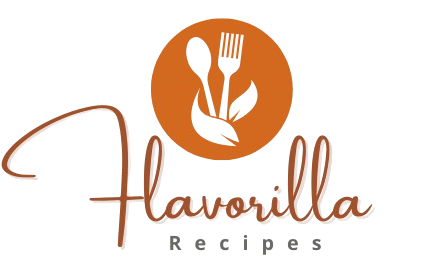

1 thought on “The Perfect Roasted Potatoes Recipe: Crispy on the Outside, Fluffy on the Inside”